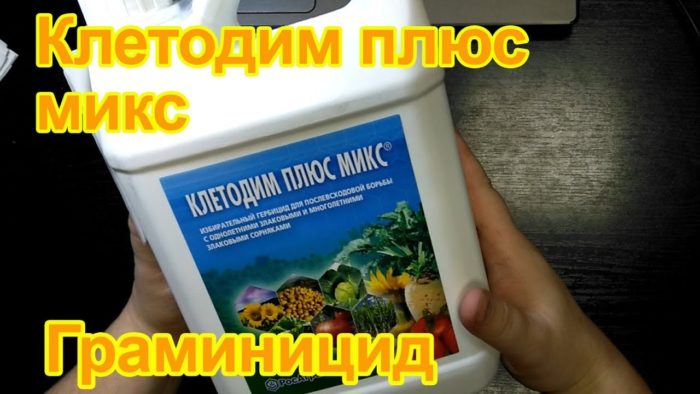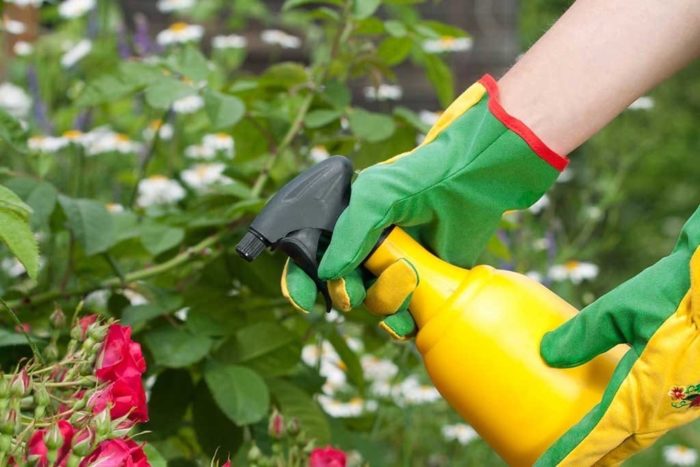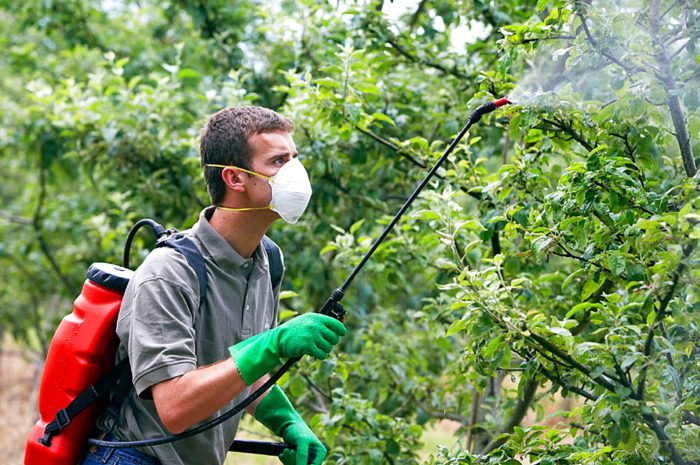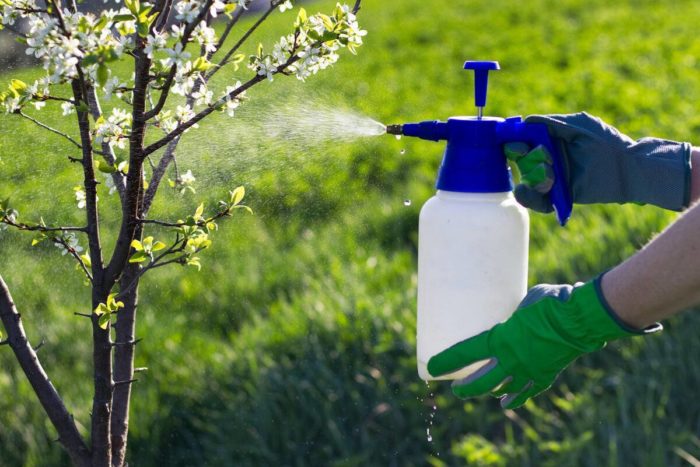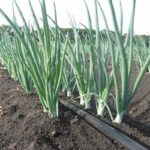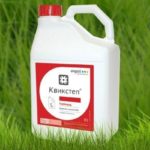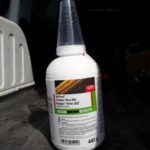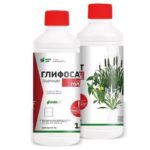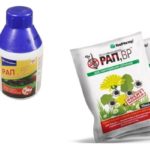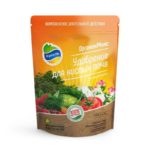For gardeners, the topic of cultivating and protecting their plants, including those that produce an edible harvest, always remains relevant. Crops have their own requirements for care, nutrition and protection from weeds and insect pests. Below we will analyze in detail the concentrate - a herbicide called “Clethodim Plus Mix, EC”. Let's consider its operating principle and application rate for different types of crops.
- Herbicide "Clethodim Plus Mix CE": general information
- Advantages of the drug
- Types and forms of release of the herbicide "Clethodim Plus Mix CE"
- Herbicide composition
- Application of the herbicide "Clethodim Plus Mix CE" for various crops
- Weeds that herbicide helps with
- The principle of action of the herbicide
- Instructions for use of herbicide
- Consumption rate
- Waiting period for the action of the herbicide "Clethodim Plus Mix CE"
- Safety of herbicide use
- Compatibility of the herbicide "Clethodim Plus Mix CE" with other drugs
Herbicide "Clethodim Plus Mix CE": general information
This is a systemic gramicidin of universal action - a herbicide that affects weedy plants of cereal crops. The product acts selectively.
Advantages of the drug
“Cletodim” is “omnivorous”, long-lasting and economical in consumption. So, it is enough to spray the crop once to provide it with protection for the entire growing season.
Types and forms of release of the herbicide "Clethodim Plus Mix CE"
The release form of gramicidin is an emulsion concentrate. It is bottled in plastic canisters, the volume of which is five litres.
Herbicide composition
The herbicide contains the active substance clethodim [(E, E) – (±)-2-{1-[[3-chloro-2-(propenyl) oxy]imino]propyl}-5-[2-(ethylthio)propyl ]-3-hydroxy-2-cyclohexene-1] at a concentration of 240 grams per liter of product.
Application of the herbicide "Clethodim Plus Mix CE" for various crops
"Cletodim" provides protection for oilseeds, vegetables and cereals. They purely include: flax, potatoes, onions, carrots, winter and spring rapeseed, soybeans, sunflowers and sugar beets.
Weeds that herbicide helps with
Gramicidin helps get rid of most types of perennial and annual weeds. Among the weeds that the herbicide fights, particularly harmful species were also found - gumai, pigweed and creeping wheatgrass. In addition, “Cletodim” gets rid of crabgrass, millet (common barnyard grass), bristle grass, wheat and corn carrion.
The principle of action of the herbicide
The chemical has a systemic effect on weed plants.Getting into the crop through the leaves, it suppresses the synthesis of plant fats, inhibiting full-fledged vegetation. The herbicide affects the entire weed plant, including its root system.
Instructions for use of herbicide
The chemical is for field use only - should not be used on garden paths or lawns. The following parameters do not matter for the agrochemical: plant development phase, soil moisture and climate. Gardeners like the economy of the drug. The disadvantage of the herbicide is that it does not act on weeds that have not yet sprouted.
To prepare a chemical solution, you need to dissolve it in a special sprayer tank. To do this, first pour in part of the water, add “Clethodim” on top of it, and then add the rest of the water in small portions. Gardeners believe that the main thing in making a high-quality mixture is to continuously mix it.
The optimal moment for processing is considered to be the period in which the height of perennial weeds has reached ten to twenty centimeters, and two to six leaves have formed on annual crops. The finished liquid is consumed in the ratio of 200-300 liters per hectare.
It is very important to understand that the chemical containing the herbicide cannot be stored. This means that you need to accurately calculate the dosage per use of the solution.
Consumption rate
Below is a table on crop spraying to protect the most common crops.
| Application rate | Agricultural crop | Type of harmful objects | Processing method | Waiting period and frequency of treatments in brackets |
| 0.2-0.4 l/ha | Soybeans, sugar beets | Grass annual weeds | Weeds are sprayed during the growing season, adding the surfactant “Mix, F”. Liquid is consumed at the rate of 200-300 liters per hectare | 60 days (1) |
| 0.7-1.0 l/ha | Common flax | Creeping wheatgrass | Crops are sprayed when flax reaches the “herringbone” phase and when wheatgrass reaches a height of ten to twenty centimeters. To enhance the effect of the drug, the herbicide is combined with the surfactant “Mix, Zh”. The chemical is used at the rate of 200-300 liters per hectare | (-1) |
| 0.2-0.4 l/ha | Sunflower | Cereal annuals | Weed plants should be sprayed during the growing season, adding “Mix, F”. The solution is used in the calculation - 200-300 l/ha | 60 days (1) |
| 0.7-1.0 l/ha | Sunflower | Wheatgrass (popularly “dog tooth” or “harrowwood”) | Treatment is carried out when the weed crop grows to ten to twenty centimeters. For better effect, add surfactant “Mix, F”. Consumption: 200-300 l/ha | 60 days (1) |
| 0.2-0.4 l/ha | Oilseed flax | Grass annual weeds | The principle of spraying does not differ from the method that is applied to common flax (creeper flax), except for the lower consumption of the active substance | 60 days (1) |
| 0.7-1.0 l/ha | Linen | Wheatgrass | Processing is the same as for ordinary flax | 60 days (1) |
| 0.2-0.4 l/ha | Spring and winter rapeseed | Annual grass weeds | The processing method is the same as for sugar beets. | 60 days (1) |
| 0.7-1.0 l/ha | Rape | Creeping wheatgrass | The method is no different from processing other types of crops - the main thing is to maintain concentration | 60 days (1) |
In the table, “Waiting period” is the waiting period, indicated by the time interval between harvesting and spraying with the chemical. The dates are indicated in days.When pre-sowing seed treatment, the value is set to (-1); when applied once, the number is set to (1). From the table it is clear that gardeners treat their crops with this herbicide once a season.
It is also worth noting that regardless of the type of weed plants, and also regardless of the concentration of the herbicide with which the crops were treated, it is worth waiting from three to seven days before going into the field to perform agro-mechanical work. The time it takes to reach the treated area may vary depending on climatic conditions and soil type.
Waiting period for the action of the herbicide "Clethodim Plus Mix CE"
The first symptoms indicating the death of the weed plant will be visible to the naked eye within two to four days. The gardener will notice that the weed has become completely unviable after five to seven days of using the herbicide.
Safety of herbicide use
This chemical does not pose a particular threat to honey insects, and has a moderate risk to human health. It should be taken into account that the drug containing gramicidin cannot be sprayed near reservoirs.
It is not a completely safe chemical, so it should be used with caution and safety. As protective equipment, gardeners use a special closed overalls that hides all parts of the body, as well as a mask, gloves and gardening glasses, which will protect against splashes and inhalation of toxic fumes of Cletodim.
In the event that a gardener is poisoned or comes into contact with this chemical on his skin or mucous membranes, the following rules should be followed:
- In case of poisoning, even with mild symptoms such as dizziness, vomiting or nausea, you must urgently call “112” or “03” and call an ambulance. If possible, you need to independently deliver the victim to the nearest clinic.
- If the solution gets into your eyes, you should immediately rinse them for fifteen minutes under running water. Do not use soap or other disinfectants.
- If the chemical comes into contact with the skin, it is necessary to wash the affected area for five minutes with running water and soap.
Compatibility of the herbicide "Clethodim Plus Mix CE" with other drugs
Experienced gardeners recommend using an emulsion concentrate with a surfactant called “Mix, F,” which contains ester phosphate. Do not dilute Cletodim with Bentazone, which is a post-emergence herbicide. In addition, it is not recommended to mix a herbicide containing gramicidin with complex fertilizers.

